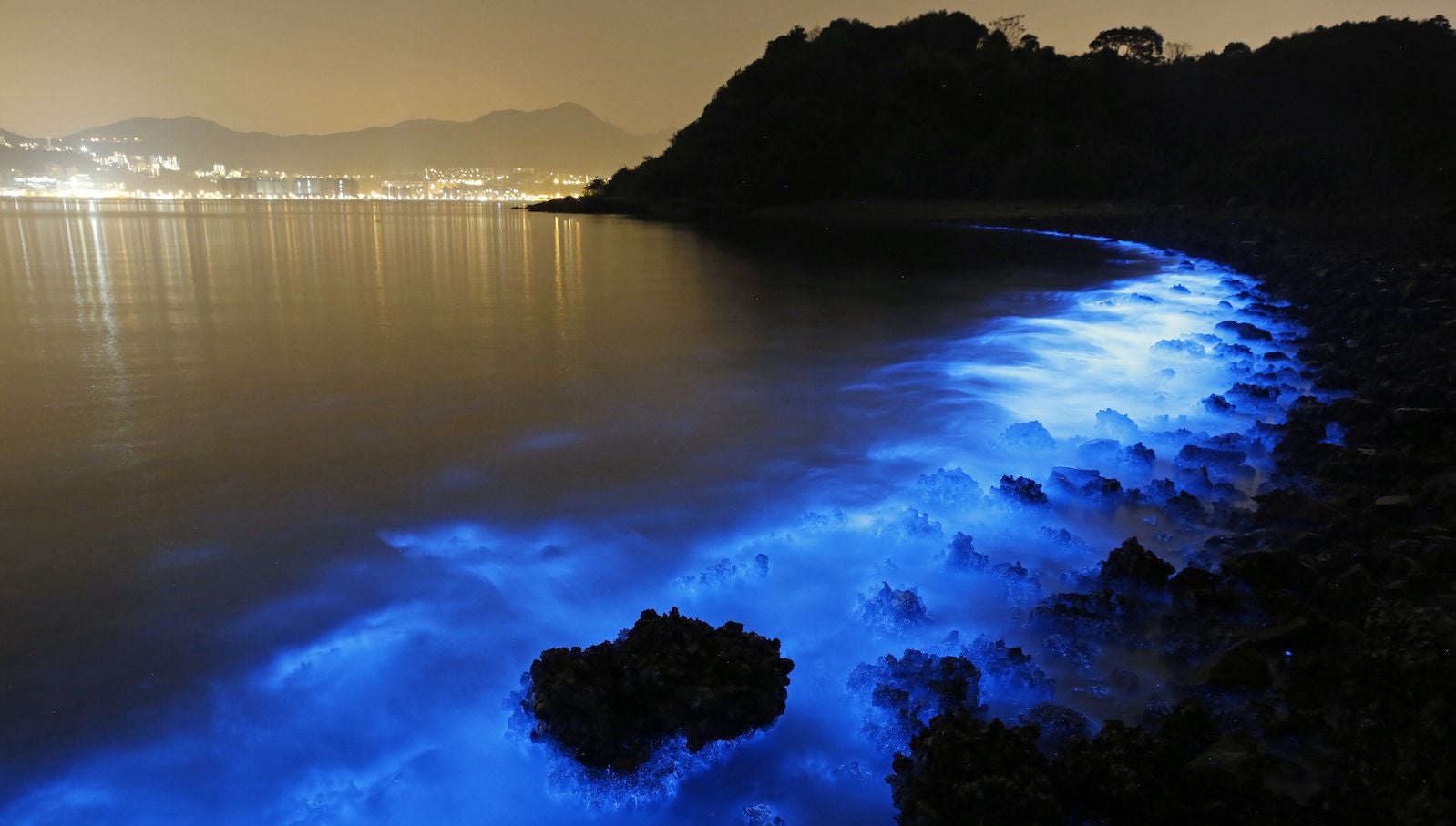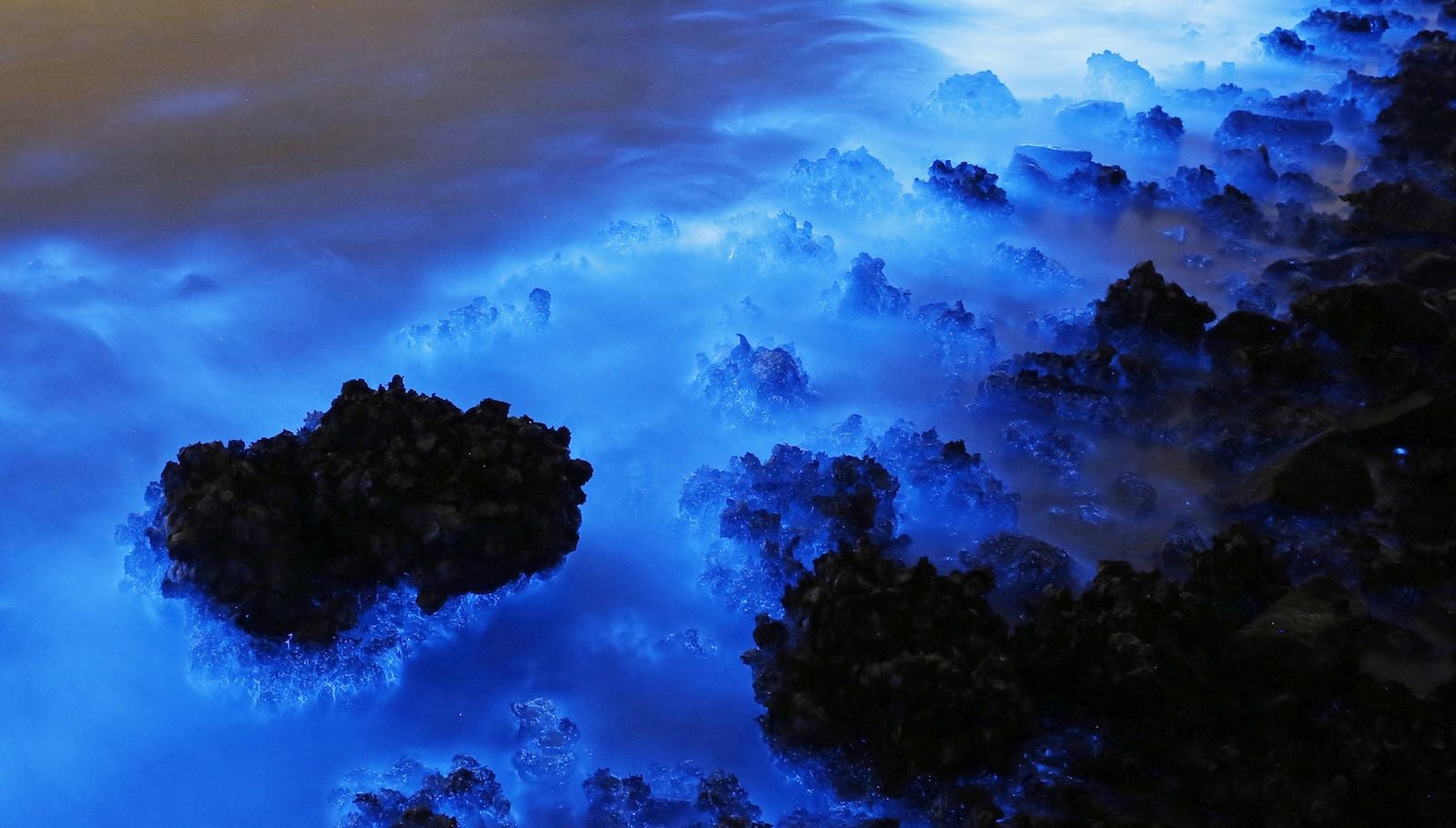Photos: Hong Kong’s toxic pollution creates gorgeous neon-blue algae blooms
The trippy indigo glow lighting up Hong Kong’s darkened shores doesn’t look like the handiwork of pig manure, fertilizer, and sewage. But that nutrient-packed combo is exactly what’s feeding the colony of bioluminescent Noctiluca scintillans, a single-cell organism that has bloomed in Hong Kong’s waters more and more frequently of late.


The trippy indigo glow lighting up Hong Kong’s darkened shores doesn’t look like the handiwork of pig manure, fertilizer, and sewage. But that nutrient-packed combo is exactly what’s feeding the colony of bioluminescent Noctiluca scintillans, a single-cell organism that has bloomed in Hong Kong’s waters more and more frequently of late.
Unable to photosynthesize on their own, these little guys eat algae. But since they sometimes kill that algae and sometimes leave it living inside them, these dinoflagellates—which are commonly called “sea sparkles”—are neither fully plants nor fully animals. But even that bathtime-toy-esque name belies how destructive sea sparkles can be when their numbers grow too huge. While Noctiluca doesn’t produce neurotoxins, like many similar organisms do, they disrupt the food chain in a way that harms other marine life.
Many scientists suspect the recent uptick in unusually large Noctiluca blooms has to do with the surge in coastal populations around the Pearl River Delta, the strip of China just north of Hong Kong. Home to Shenzhen, Dongguan, and Guangzhou, to name a few of its mega-cities, the PRD’s population has tripled in just a few decades to more than 66 million.
Hong Kong’s not the only place struggling with this glow-in-the-dark problem. Scientists think Noctiluca blooms in the Arabian Sea are stripping oxygen from the water and creating “dead zones,” wreaking havoc on fisheries there.
